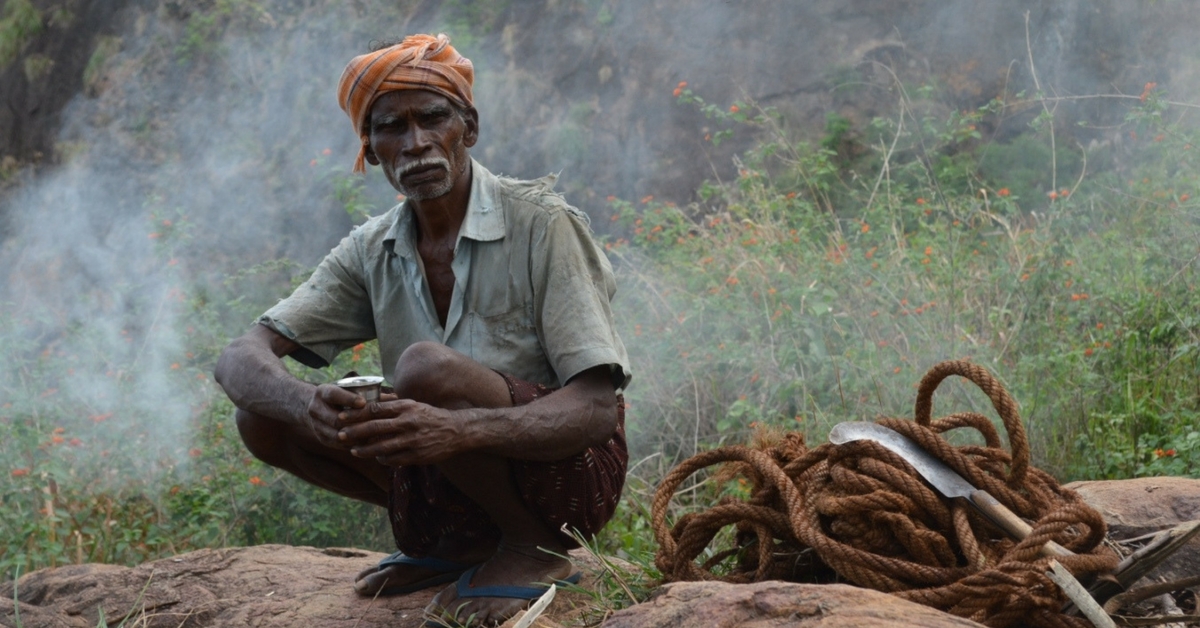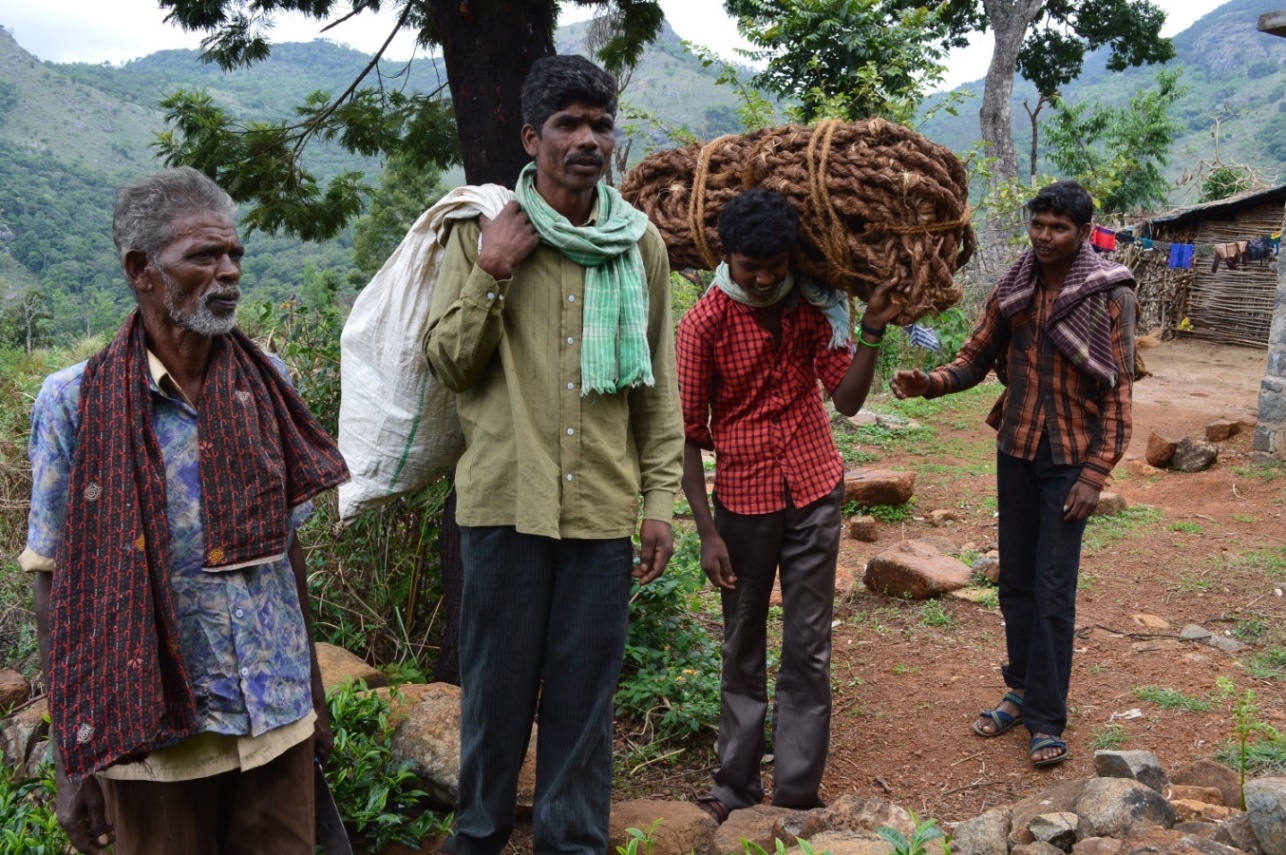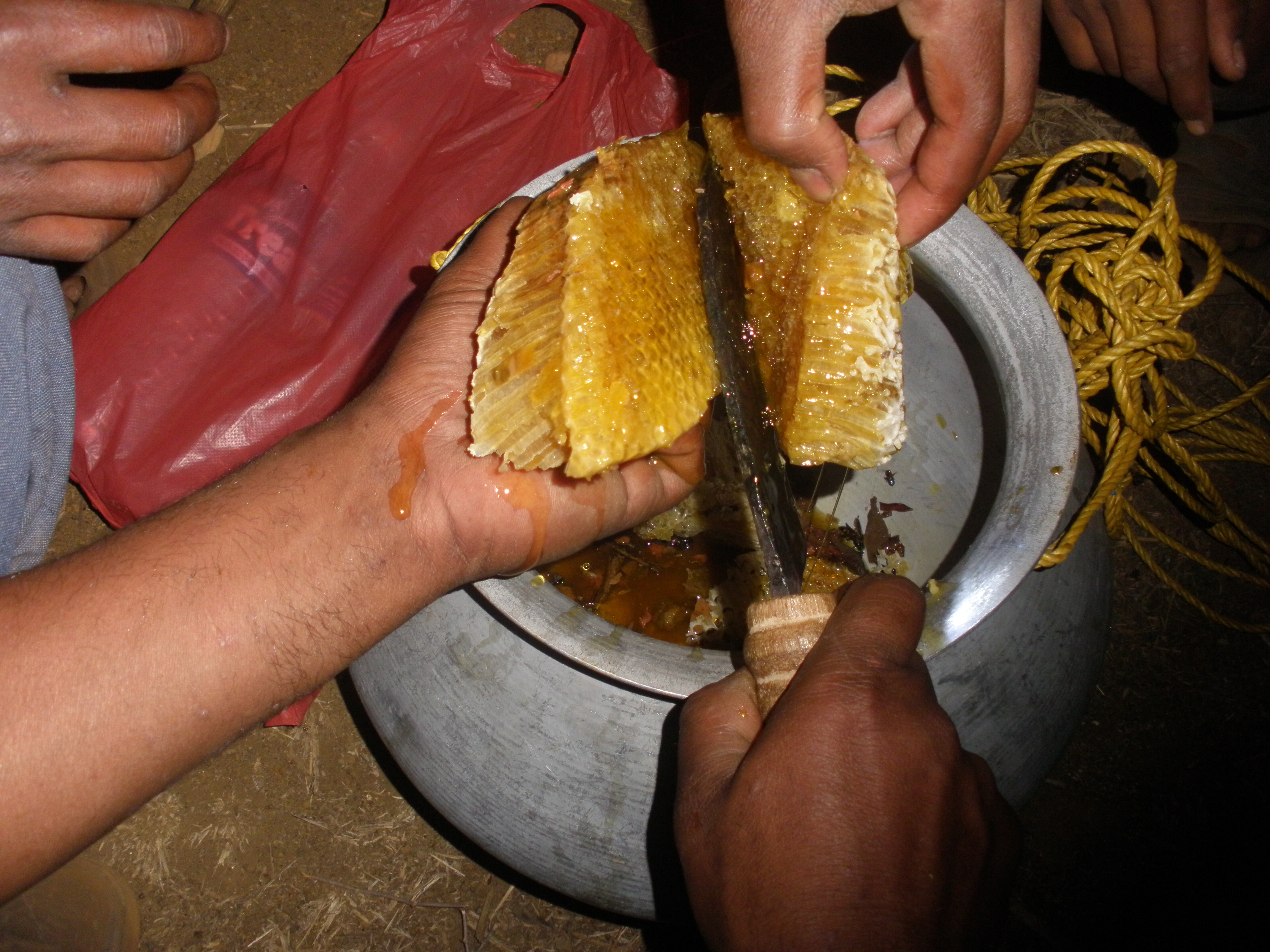TBI Blogs: Meet the Honey Hunters of the Nilgiris – the Men Who Risk Their Lives for Your Sweet Jar of Honey
Discover the seasonal journey made by the honey hunters of the Nilgiris to retrieve wild honey, and transfer it to modern markets for consumption.

Audra Caroline Bass explores the seasonal journey made by the honey hunters of the Nilgiris to retrieve wild honey, and transfer it to modern markets for consumption.
The sun is just peeking over the Southern hills known as the Nilgiris – The Blue Mountains – because of the Rayleigh Scattering Effect phenomenon, where tiny electrons are oscillated by sunlight, making the hills appear blue before our eyes. Plus, these mountains are blanketed by the blue Strobilanthes flower, and looming clouds often bathe the hills in a blue smoky haze. From a distance, the sun illuminates the faint blue faces of these hills. Yet today, atop the mountain and canopied under the umbrella of the Shola forests, the sight is green.
He rises early. He gathers with his team, the other honey hunters—those who fulfill their ancient duty and forest stewardship. But it is not time to move. Not yet. They must sit with the village priest. They must perform the poojas and extol the forest deities, for the forest is watching and waiting, and does not easily forgive those who so easily disrespect it. Hence they cleanse themselves, mind and body, with weeks of fasting and diligent pure thoughts.
They approach the forest in reverence and anticipation. They are ready—almost.

Moving deep into the trees, now shrouded from the village and the outskirts of far-reaching tea fields, they go in search of materials. They need tools – a basket, some rope, bundles of leaves – and this forest is the perfect market.
They strip the bark of the karasamaram, a common tree of this deciduous environment, and plait the strips into a long, tight rope that is then shaped into a helix with bamboo footholds tied in place. A basket is woven from the bark remnants, and the inner bowl is covered with a thin leaf layer. Then they must choose carefully. They must find the right plants and bundle them tight. This bundle will be burned and will be their meagre defense and protection.
Now it is time to move deeper into the forest. The canopy thickens, the ferns grow taller, and weeds and vines twist and could easily make the path unbeknownst to the amateur wanderer. They cross the babbling brooks and the thirsty rivers in wait of the late summer monsoons. They cross the waters, climb the rocks, and forge through the underbrush, all while barefoot or wearing impossibly sturdy chaapas, and laden with the weight of forest-welded tools.
The cliff is in sight. Its concrete underbelly is dotted with the bountiful-in-quantity and imposing-in-size hives of apis dorsata, the Great Rock Bee—great in size, number, and ferocity. Hours have passed, and the sun now inflames the treetops, painting the horizon in piercing gold. The sight is yellow, then orange, then red, and continues to melt. They have reached the cliff’s edge. The rope is tied to a clifftop tree and dropped. The leaf bundle is set aflame, and the basket is waiting to be lowered.
They are ready. The lone climber moves.

With a sturdy grip, disciplined composure, and deep faith in the forest rope, he climbs down the cliff with the daunting 500-foot drop and comes face to face with his first hive of the rancorous dorsata. They say five stings can kill a man—this man will face 60,000. To soothe the short-fused temper of these honeybees (and possibly his own nerves), he sings a gentle song:
Kunna athigde kacha beda
Dhodda athigde kacha beda(“Younger sister don’t bite me
Older sister don’t bite me”)
(Athigde is a respectful way to refer to a woman in the Kurumba language. “Younger sister” likely refers to the worker bee, and “older sister” to the queen bee.)
With one hand gripped tight to a bamboo pole, and the other balancing the basket dangling from a rope held by his comrades above, he sharply prods at the comb. The balanced basket is then soon filled with the oozing honey and hive chunks, along with the ill-fortuned bee larvae if he gets too close to the brood portion of the comb.
The smoldering bundle of brush hangs from his waist, and is used to slowly swing smoke along the hive and alarm the honeybees to abscond the nest. The stunned honeybees swarm from the hive and out to the open air, but also buzz all around the honey hunter’s body, whose only layer of protection is his clothes and the swinging smoke. Yet the honeybees do not sting—only maybe a couple here or there.
They swarm and buzz and zip around. The hum of thousands of wing beats is deafening, but he remains steadfast on the rope. He collects the honey and fills the basket. The others above pull it up and pour the coveted contents into smaller tins brought from the village.
The hunter on the rope shuffles down to the next comb, and repeats the process.

Each honey hunt lasts a few hours each night for the next few days. At nights they gather, resting at dawn. Finally, the hunters fill all the metal tins to the brim with the thick, sweet honey. Minuscule yellow dots only slightly speckle its golden opaque color—the remnants of floral pollen not yet the honey it now swims in.
The hunt has been satisfactory—in fact, more than satisfactory! The tiger did not linger silently in the bush, the elephant did not trumpet and stampede by the campsite, and the bear did not barrel in like a loud, drunken thief to steal the precious honey. The forest acknowledged the hunters’ respect, and in return, blessed its dwellers.
They, the honey hunters, give pooja and a portion of the honey goods in gratitude, and return home.

The gatherers share the honey among family and friends from the villages, and set aside a portion for sale. Once, the honey went only to “middle men”, who used sleek words to barter down the wild honey to prices unsuitable for the great effort put in to retrieve such a precious commodity. But now there is another buyer—Last Forest. They too have deep reverence for the forest, and seek to work fairly with these forest gatherers.
They seek to bring this wild, sweet gold to the ever-growing markets, and deliver with it the thousands of tales mixed over thousands of years with the constant hexa-comb hives of the Nilgiris. In return, they guarantee the honey hunters medical support, free training for sustainable ways to gather the honey so that stewardship for the forest is always improving, insurance in their profession, and stakes in the honey products through the producer company Aadhimalai.
For several years, the relationships between these honey hunters and those from Last Forest have remained steadfast and sweet as the honey they both adore. May the years continue, the honey flow, the markets become fairer, and may the traditions of the deep blue-green forests sustain.
(The author is currently working for Last Forest/Keystone Foundation as an AIF Clinton Fellow.)
For further inquires about Last Forest and its work in the Nilgiris, get in touch via email.
Like this story? Or have something to share? Write to us: [email protected], or connect with us on Facebook and Twitter.
NEW: Click here to get positive news on WhatsApp!
If you found our stories insightful, informative, or even just enjoyable, we invite you to consider making a voluntary payment to support the work we do at The Better India. Your contribution helps us continue producing quality content that educates, inspires, and drives positive change.
Choose one of the payment options below for your contribution-
By paying for the stories you value, you directly contribute to sustaining our efforts focused on making a difference in the world. Together, let’s ensure that impactful stories continue to be told and shared, enriching lives and communities alike.
Thank you for your support. Here are some frequently asked questions you might find helpful to know why you are contributing?


This story made me
-
97
-
121
-
89
-
167











